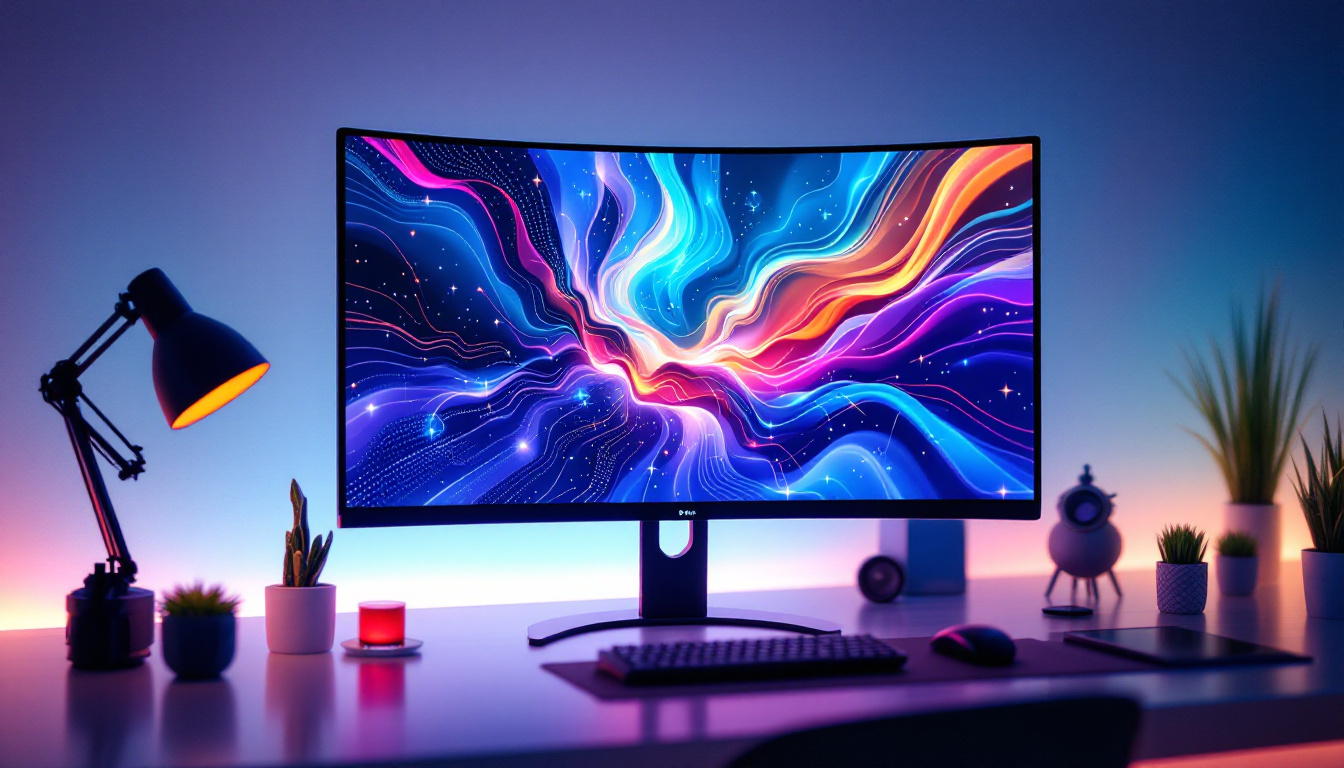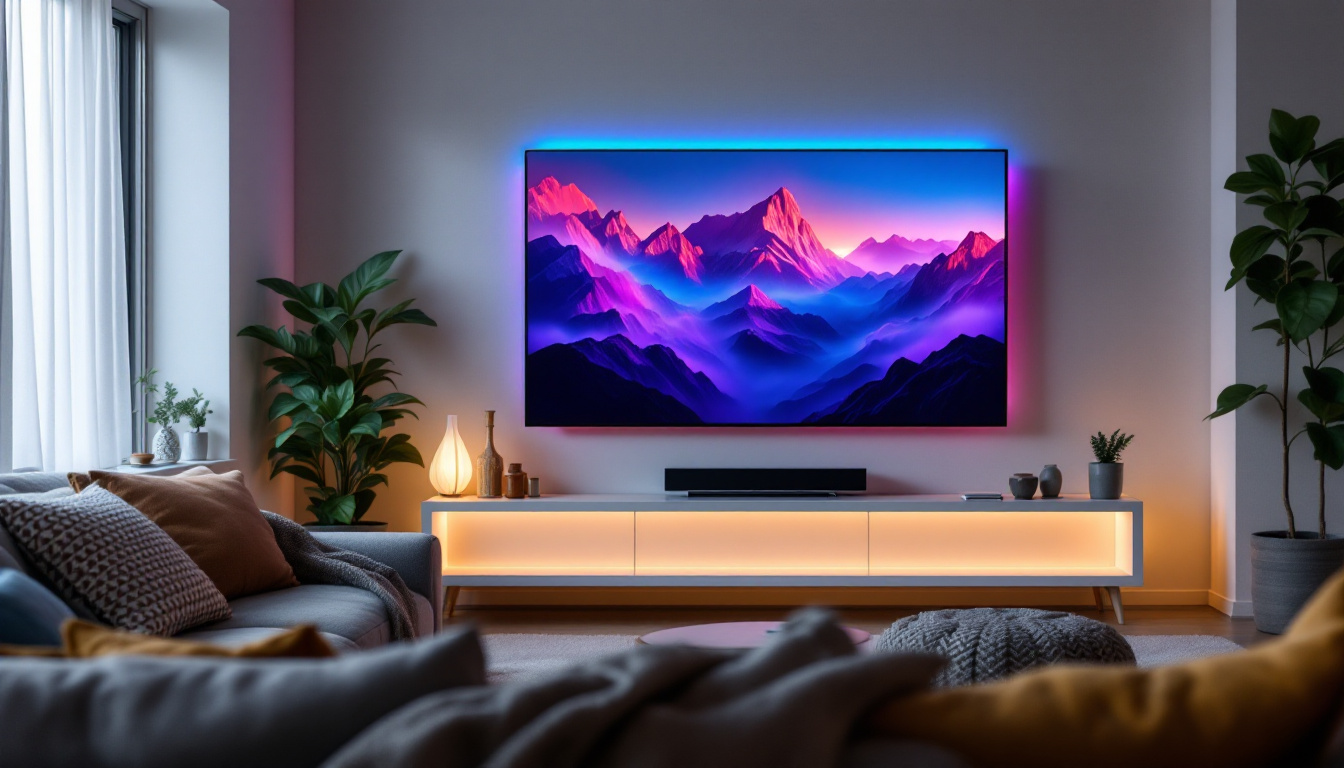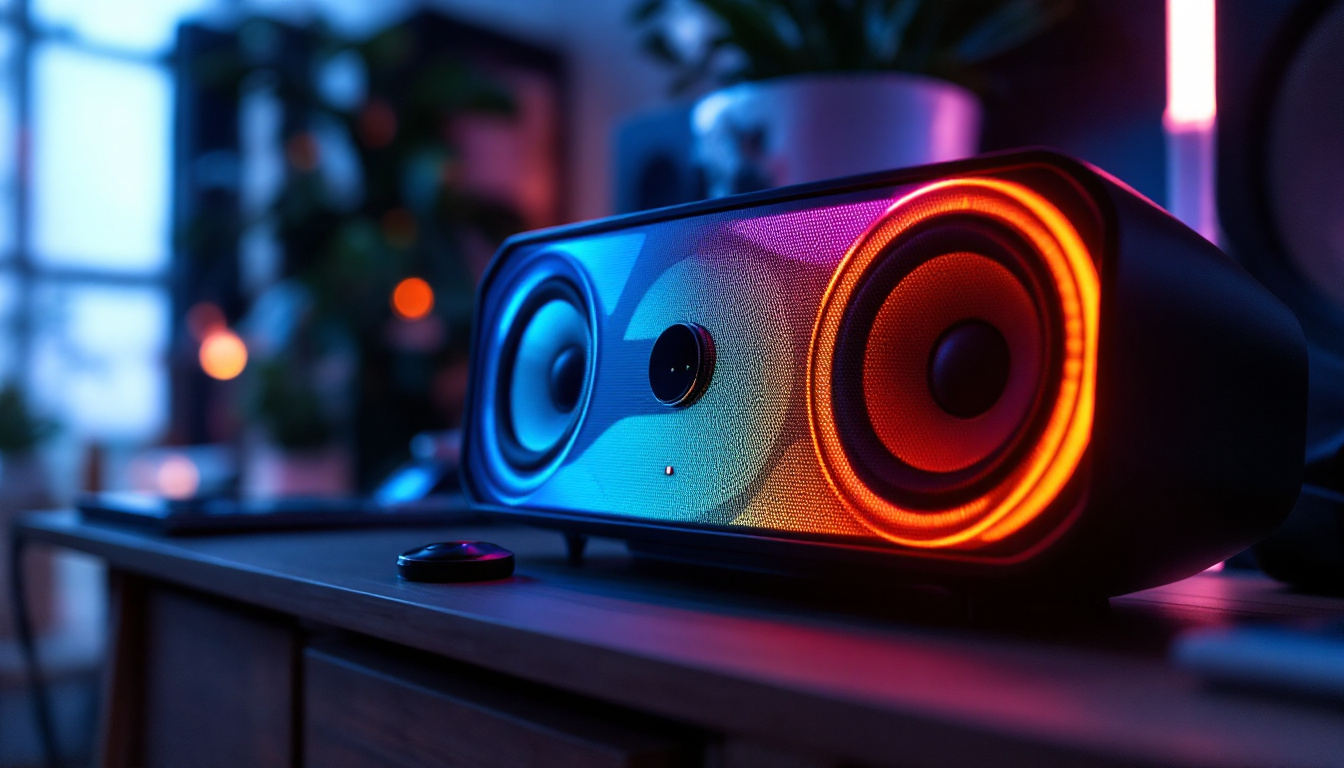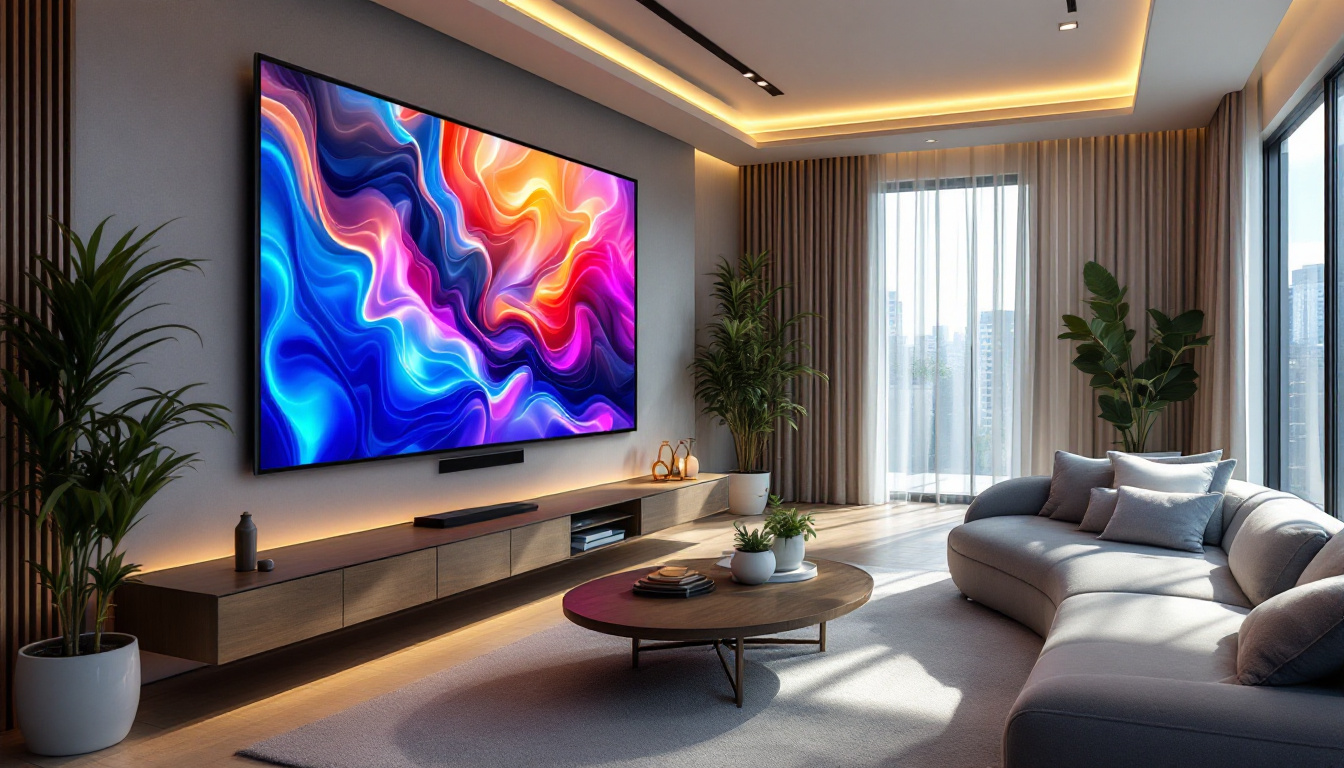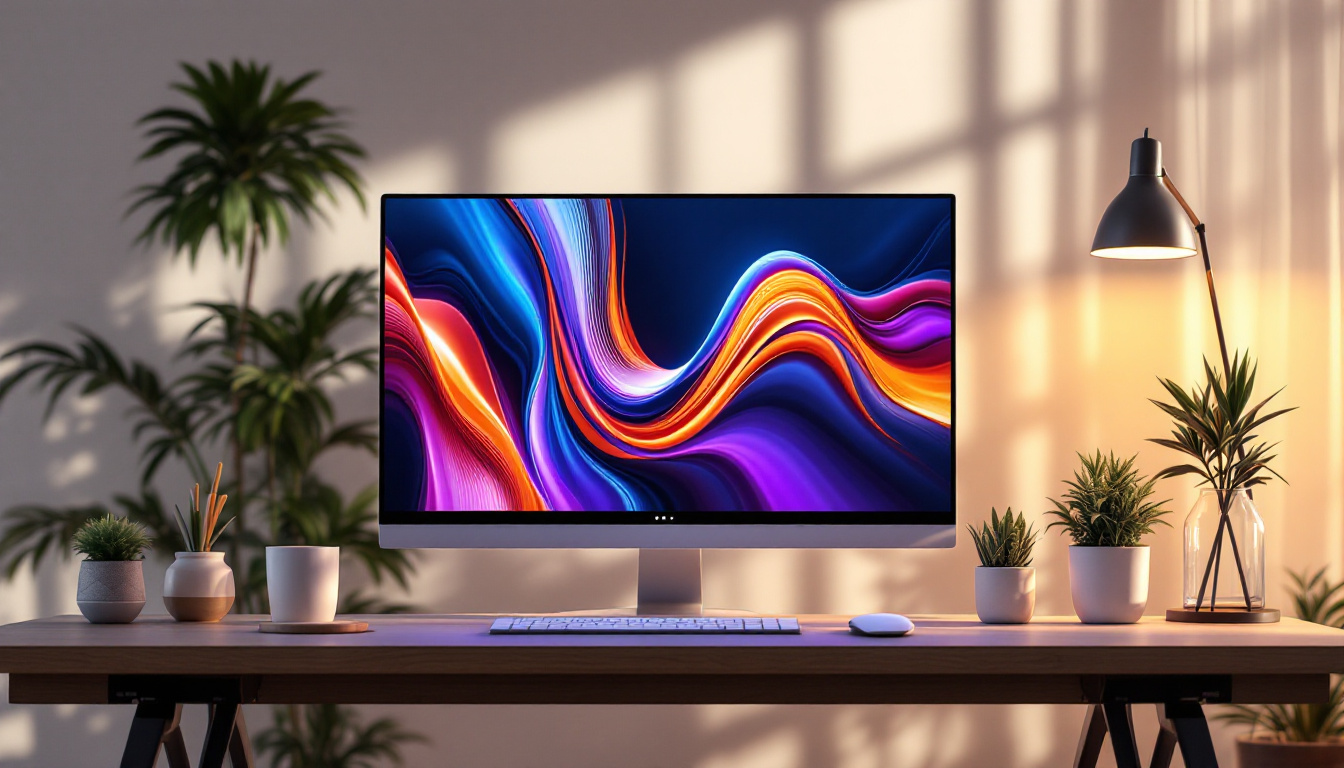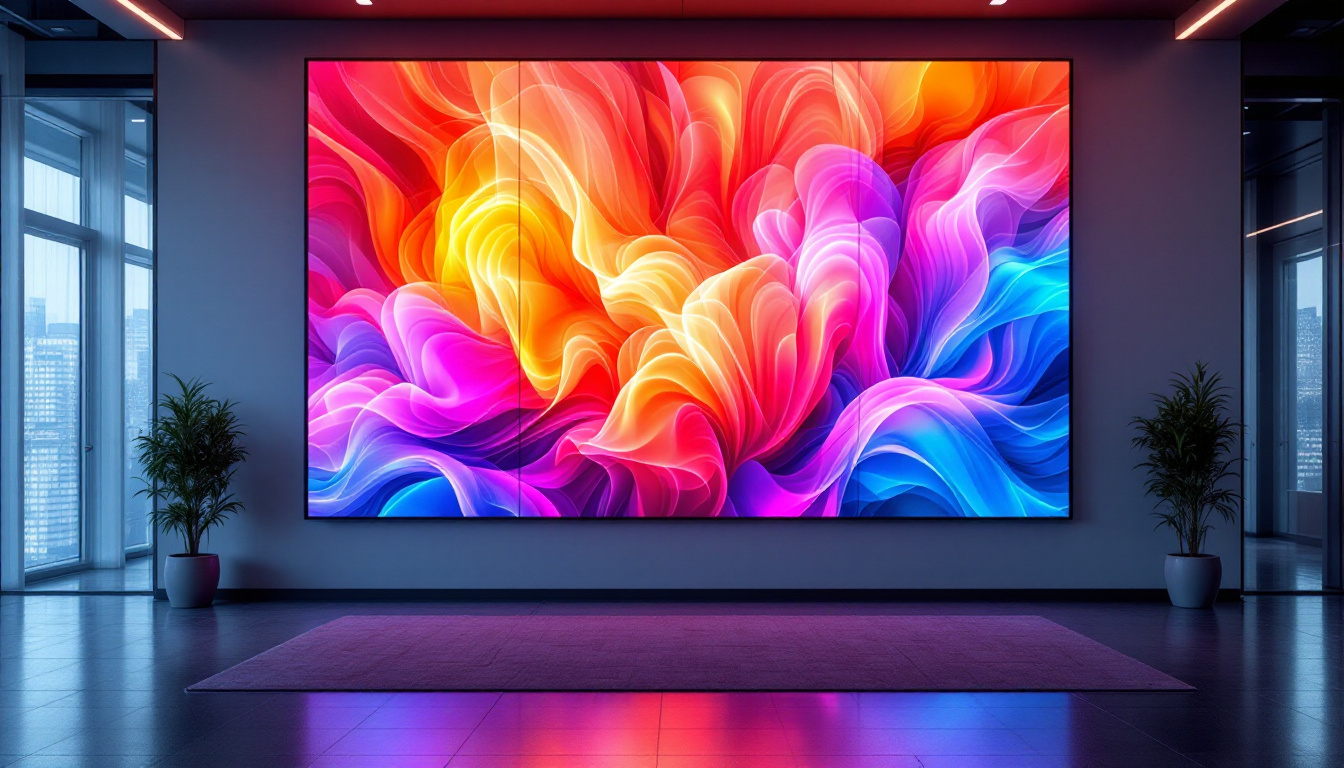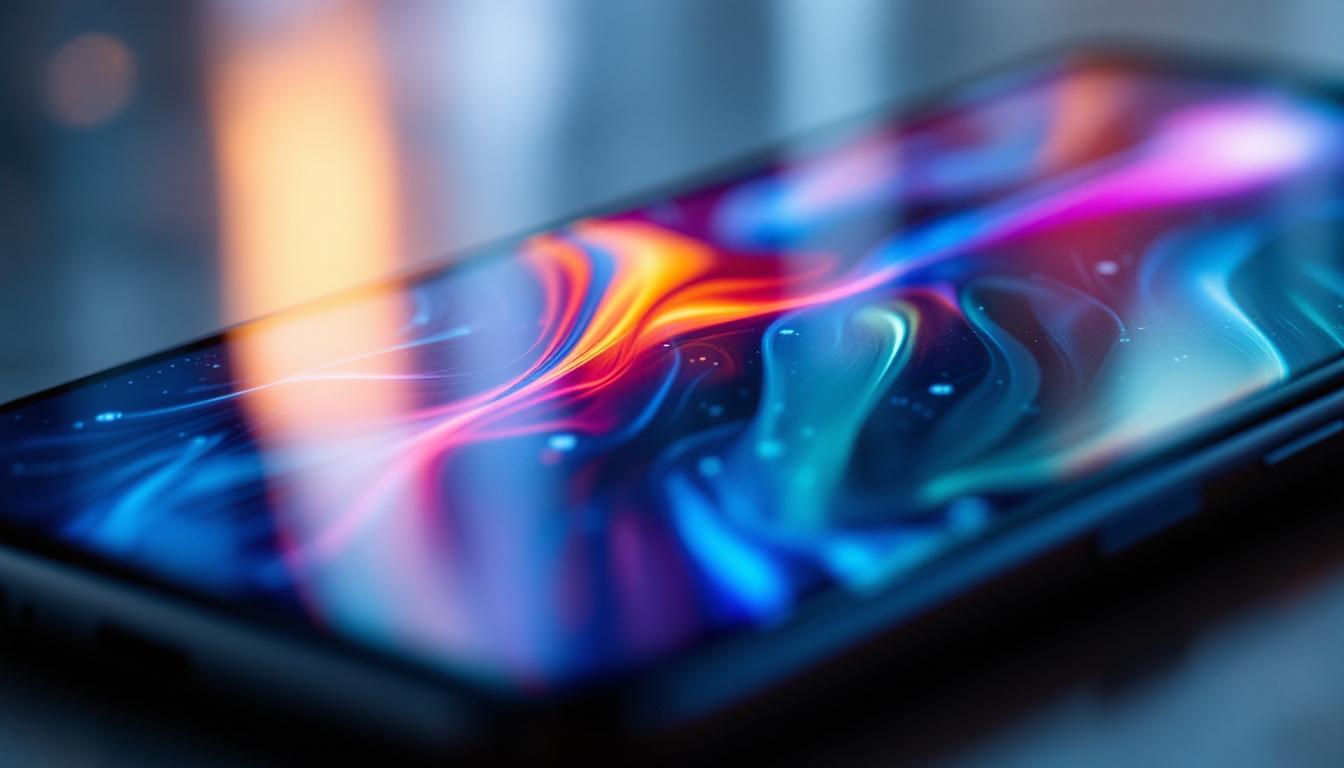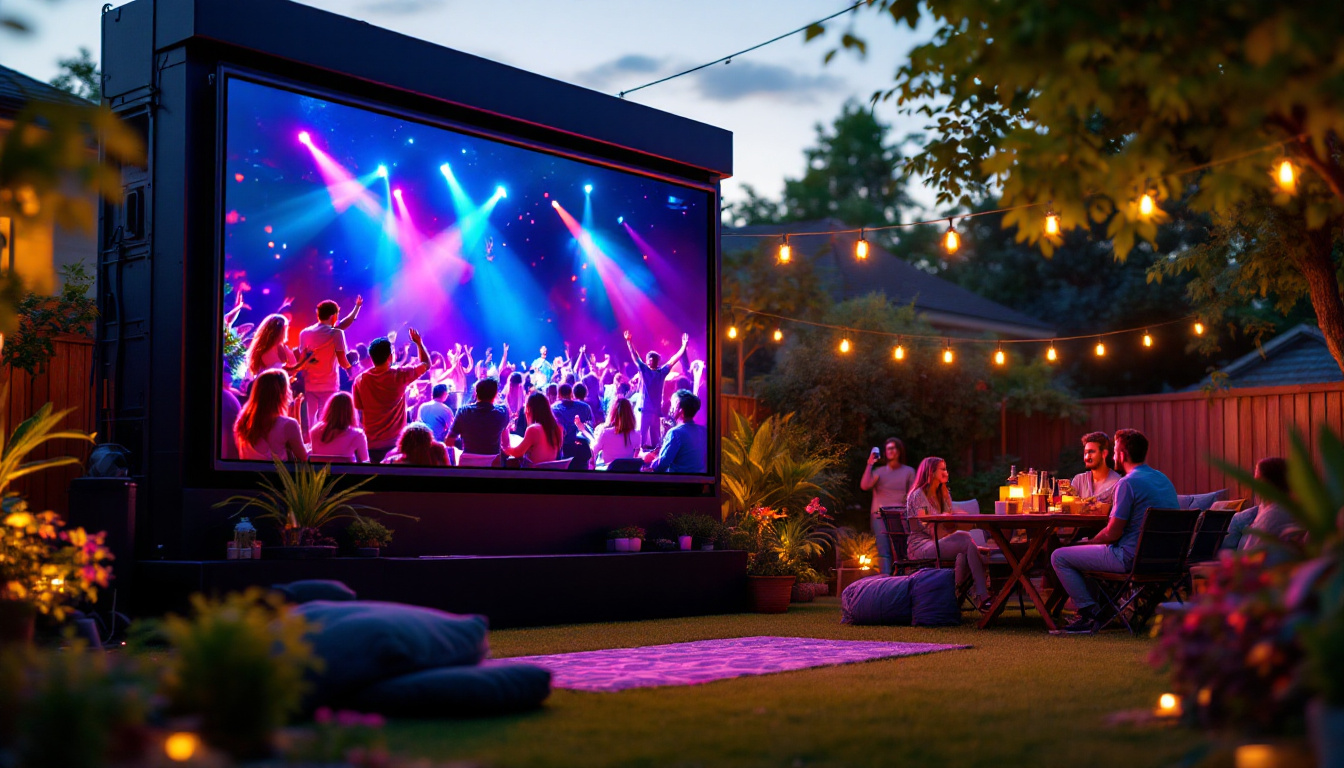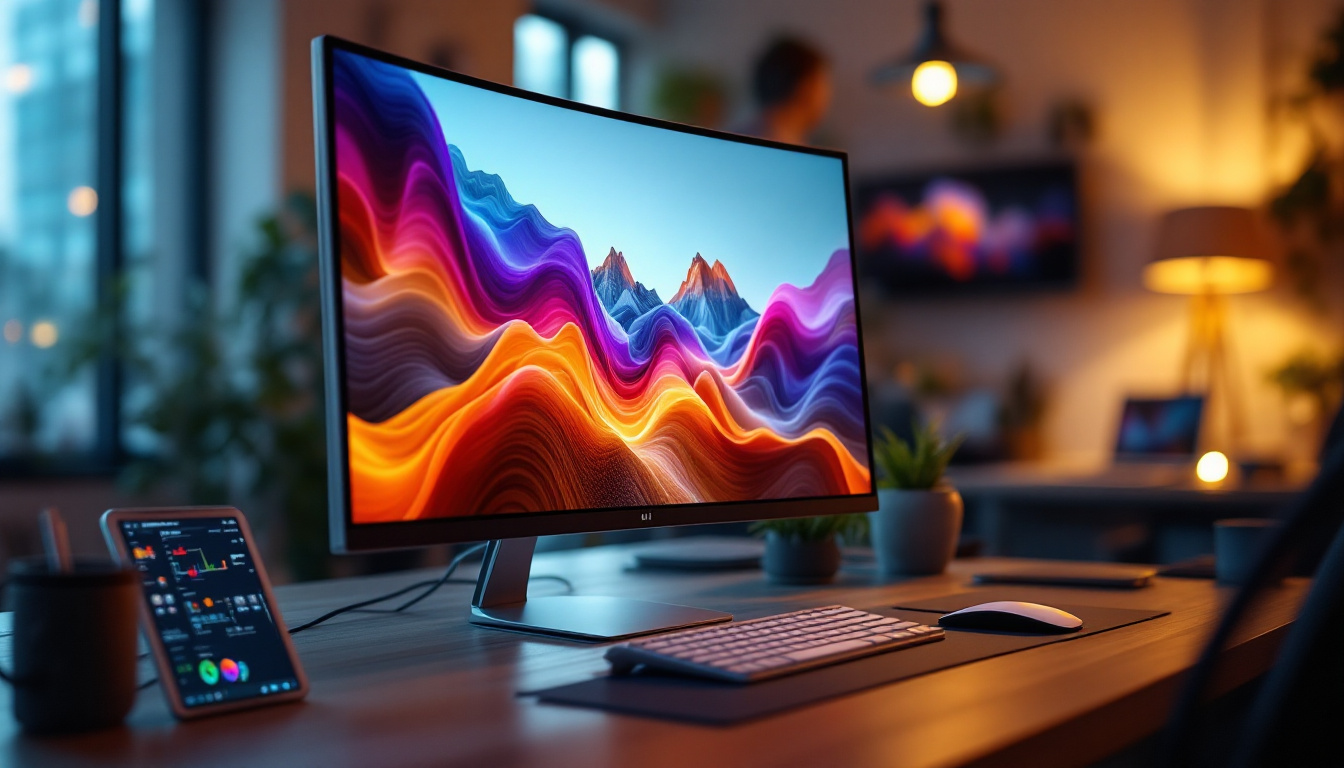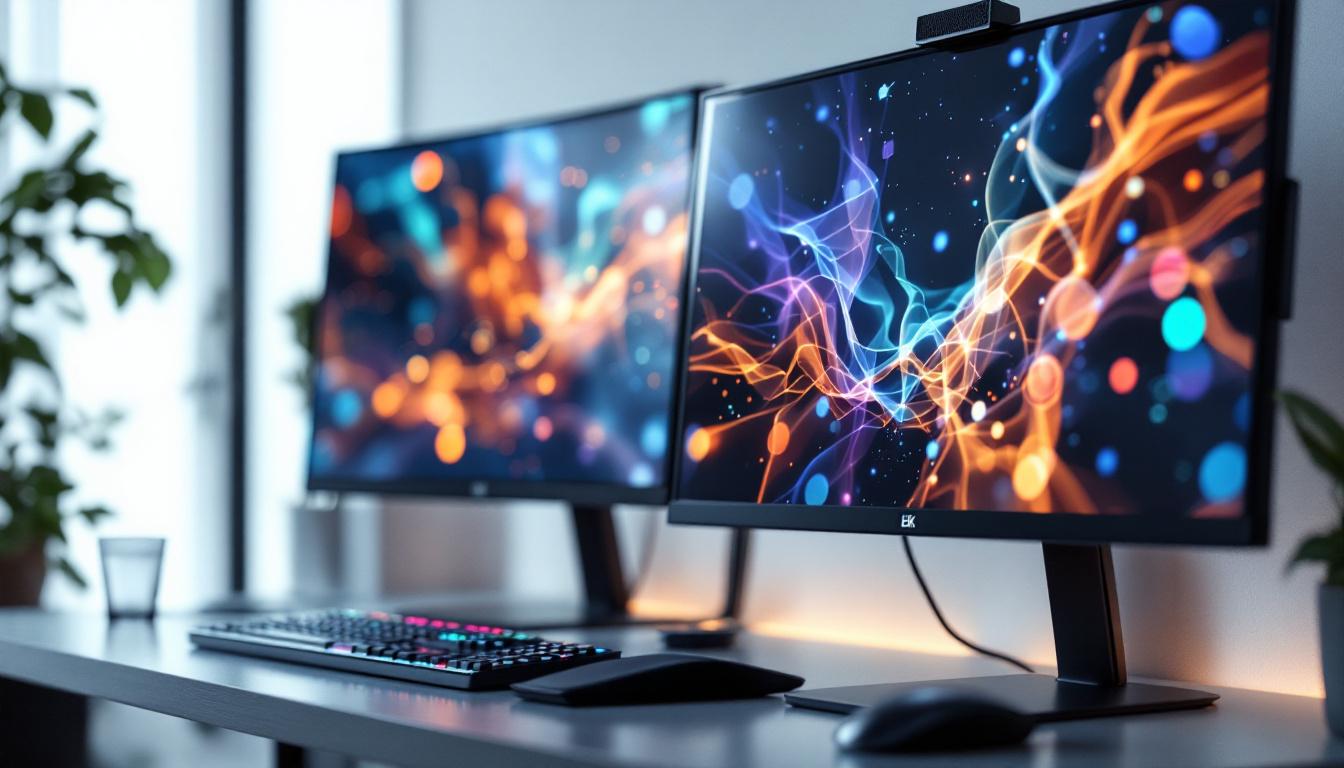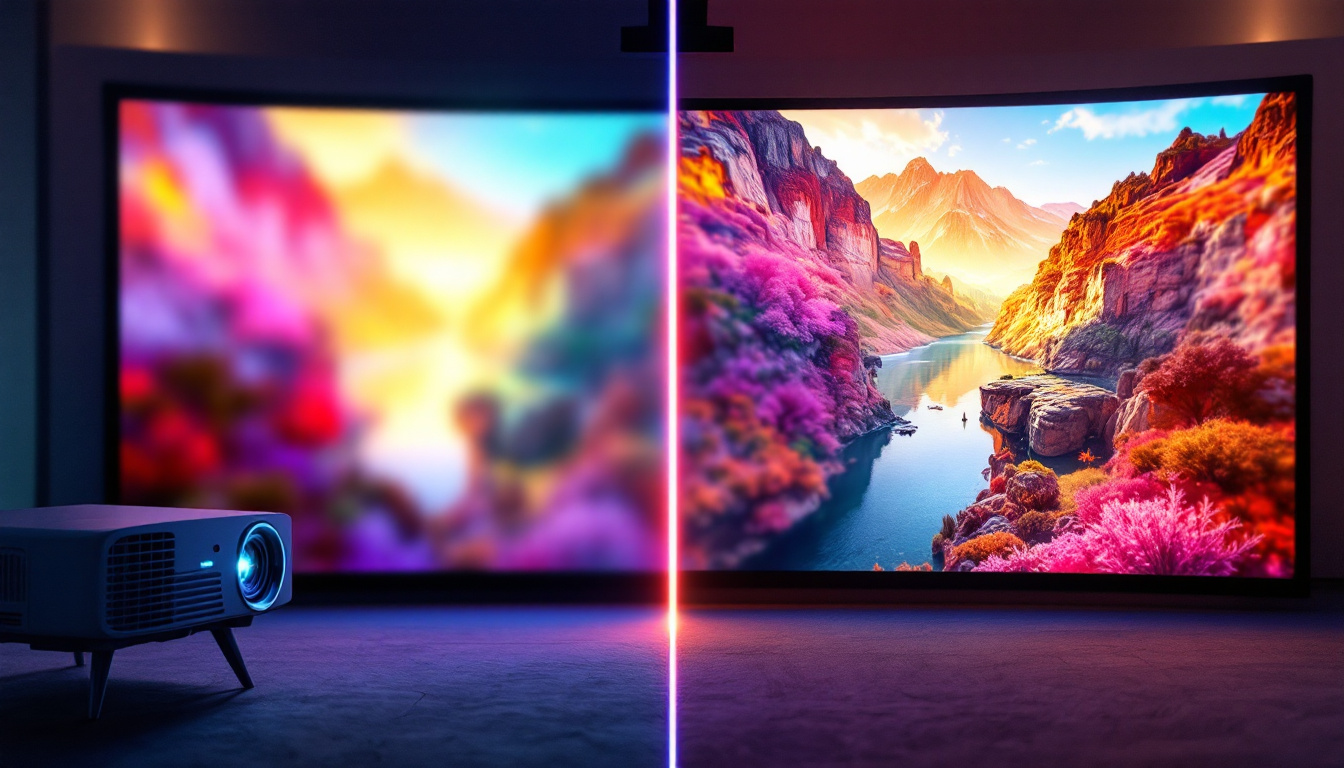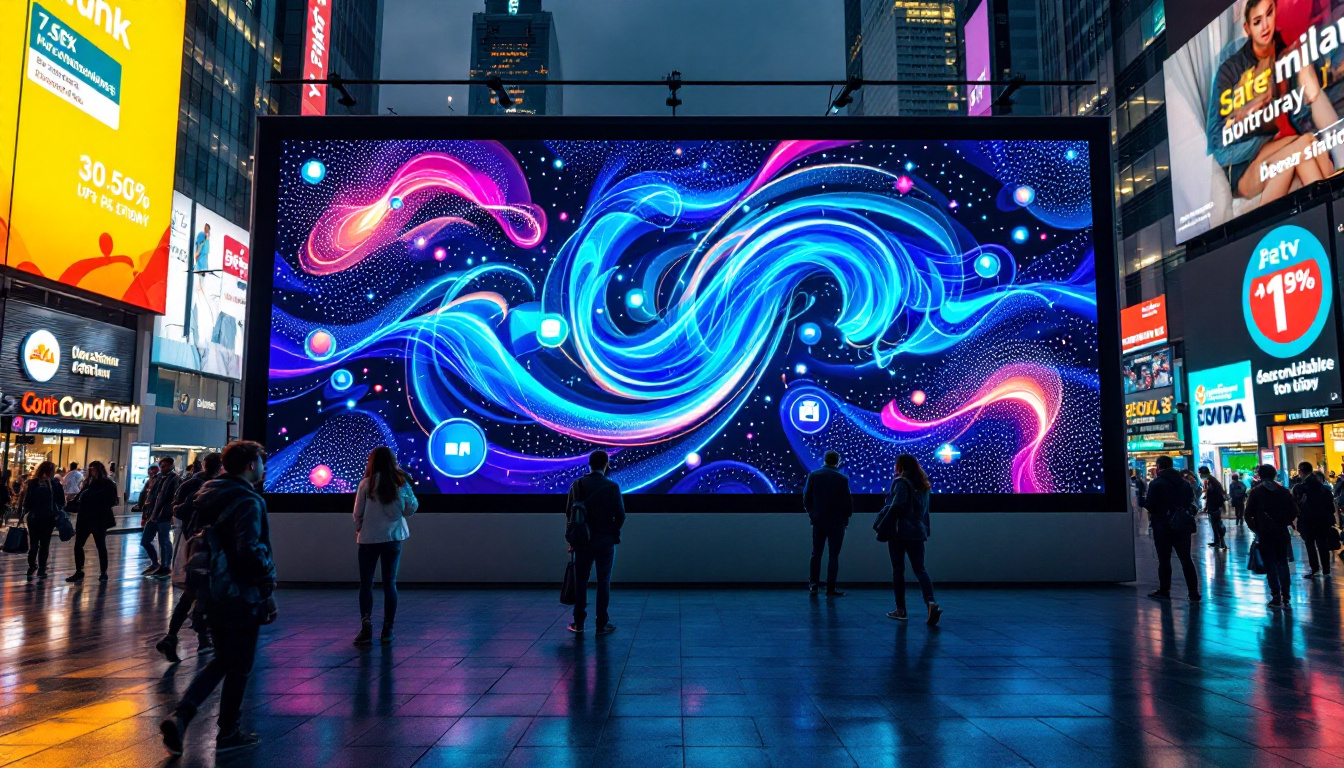In recent years, technology has advanced at a rapid pace, leading to innovative designs and functionalities in consumer electronics. Among these advancements, the curved touch screen monitor has emerged as a popular choice for both personal and professional use. This article delves into the intricacies of curved touch screen monitors, focusing on their LED display technology, advantages, and applications.
Understanding Curved Touch Screen Monitors
Curved touch screen monitors are designed to enhance user experience by providing a more immersive viewing experience. Unlike traditional flat screens, these monitors feature a gentle curve that wraps around the viewer’s field of vision, creating a sense of depth and engagement.
Design and Aesthetics
The design of curved monitors is not just about aesthetics; it plays a crucial role in functionality. The curvature of the screen helps to reduce glare and reflections, which can be particularly beneficial in brightly lit environments. This design also allows for a wider field of view, making it easier to see content from different angles without distortion.
Moreover, the sleek and modern look of curved monitors often appeals to tech enthusiasts and professionals alike. They can serve as a statement piece in any workspace, blending seamlessly with contemporary design elements. The integration of LED backlighting further enhances the visual appeal, allowing users to customize the ambiance of their workspace. This feature can be particularly captivating in gaming setups, where dynamic lighting can elevate the overall experience.
Touch Screen Technology
Touch screen technology in curved monitors adds another layer of interactivity. This feature allows users to navigate through applications, manipulate data, and engage with content using simple gestures. The responsiveness of touch screens can significantly enhance productivity, especially in creative fields such as graphic design or video editing.
There are various types of touch screen technologies, including capacitive and resistive. Capacitive touch screens are more common in modern devices due to their sensitivity and ability to recognize multiple touch points simultaneously. This capability is particularly useful for tasks that require precision, such as drawing or gaming. Additionally, many curved touch screen monitors come equipped with advanced features like palm rejection and pressure sensitivity, which further enhance the user experience by making interactions feel more natural and intuitive.
Furthermore, the integration of software designed specifically for touch interactions can transform how users engage with their work. For instance, applications that utilize gesture controls can streamline workflows, allowing for quicker access to tools and functions. This is especially advantageous in collaborative environments, where multiple users can interact with the screen simultaneously, fostering a more dynamic and engaging workspace. As technology continues to evolve, the potential for curved touch screen monitors to revolutionize both personal and professional settings becomes increasingly apparent.
LED Display Technology
At the heart of most curved touch screen monitors lies LED display technology. LED, or Light Emitting Diode, displays are known for their vibrant colors, high contrast ratios, and energy efficiency. Understanding how LED technology works is essential for appreciating the quality of images produced by these monitors.
How LED Displays Work
LED displays utilize a grid of tiny light-emitting diodes to create images. Each diode can emit light in various colors, allowing for the reproduction of a wide spectrum of hues. In most cases, LED monitors are categorized into two types: edge-lit and full-array. Edge-lit LED monitors use diodes placed along the edges of the screen, while full-array monitors have a grid of diodes behind the entire screen, providing better uniformity and contrast.
The ability to control each individual diode allows for dynamic contrast ratios, resulting in deeper blacks and brighter whites. This technology is particularly advantageous for tasks that require color accuracy, such as photo editing or graphic design. Additionally, advancements in LED technology have led to the development of Quantum Dot displays, which further enhance color reproduction and brightness, making them a popular choice for high-end monitors and televisions.
Benefits of LED Displays
One of the primary benefits of LED displays is their energy efficiency. Compared to traditional LCD monitors, LED screens consume less power, which can lead to reduced electricity bills and a smaller carbon footprint. Additionally, LED displays tend to have longer lifespans, making them a more sustainable choice in the long run. This longevity is not only beneficial for consumers but also reduces electronic waste, contributing to a more sustainable environment.
Furthermore, LED technology provides faster response times, which is crucial for gamers and those who work with fast-moving visuals. The reduced motion blur enhances the overall viewing experience, making it ideal for both entertainment and professional applications. Moreover, the slim profile of LED monitors allows for sleek designs that can fit seamlessly into modern workspaces or home theaters, providing aesthetic appeal alongside functionality. As a result, LED displays have become increasingly popular in various settings, from corporate offices to gaming lounges, showcasing their versatility and adaptability to different user needs.
Advantages of Curved Touch Screen Monitors
Curved touch screen monitors offer a multitude of advantages that make them appealing to various user demographics. From enhanced immersion to improved ergonomics, these monitors cater to a range of needs and preferences.
Enhanced Immersion
The curved design of these monitors creates a more immersive experience by wrapping the display around the viewer’s peripheral vision. This effect is particularly noticeable when watching movies or playing video games, where the curvature can make the viewer feel as if they are part of the action. The enhanced field of view can also improve focus and engagement during presentations or collaborative work.
Moreover, the curvature of the screen can enhance color accuracy and contrast, providing a more vivid and lifelike representation of images. This is especially important for graphic designers and photographers who rely on precise color reproduction for their work. The immersive experience is further amplified by the ability to interact directly with the screen, allowing users to manipulate images and data in a more tactile and engaging manner.
Improved Ergonomics
Curved monitors are designed with user comfort in mind. The curvature reduces eye strain by allowing the eyes to maintain a more natural position while viewing the screen. This ergonomic advantage is particularly beneficial for individuals who spend long hours in front of a computer, as it can help mitigate fatigue and discomfort.
Additionally, the touch screen functionality allows for more natural interaction with the monitor, reducing the need for external input devices like a mouse or keyboard. This can lead to a more intuitive workflow, particularly in creative industries. Furthermore, the design encourages a more relaxed posture, as users can sit at a comfortable distance without compromising their viewing angle. This aspect is crucial in office environments where prolonged sitting can lead to musculoskeletal issues. By integrating touch capabilities, users can also streamline tasks such as scrolling through documents or navigating software applications, making the entire experience more fluid and efficient.
Applications of Curved Touch Screen Monitors
The versatility of curved touch screen monitors makes them suitable for a wide range of applications. From entertainment to professional settings, these monitors can enhance productivity and user experience across various fields.
Gaming and Entertainment
For gamers, the immersive experience provided by curved monitors can be a game-changer. The wider field of view allows players to spot opponents and navigate virtual environments more effectively. Coupled with high refresh rates and quick response times, curved touch screen monitors can significantly enhance the gaming experience.
In the realm of entertainment, these monitors are ideal for watching movies and streaming content. The curvature draws viewers into the action, making it feel more engaging. Many curved monitors also support high-definition resolutions, further enhancing the visual experience.
Professional Use
In professional settings, curved touch screen monitors can improve collaboration and productivity. Their interactive capabilities allow teams to brainstorm and share ideas more effectively during meetings. The touch functionality enables users to annotate documents, create presentations, and manipulate data with ease.
Industries such as design, architecture, and engineering can benefit greatly from the precision offered by curved touch screens. The ability to interact directly with designs and models can streamline workflows and enhance creativity.
Choosing the Right Curved Touch Screen Monitor
When selecting a curved touch screen monitor, several factors should be considered to ensure that it meets the user’s needs. Understanding the specifications and features available can help make an informed decision.
Screen Size and Resolution
The screen size and resolution are critical factors to consider. Larger screens can provide a more immersive experience, while higher resolutions ensure that images are sharp and detailed. For professional applications, a 4K resolution may be preferable, as it offers greater clarity for intricate designs and graphics.
Refresh Rate and Response Time
For gaming and fast-paced applications, the refresh rate and response time are essential. A higher refresh rate (measured in hertz) results in smoother visuals, while a lower response time (measured in milliseconds) reduces motion blur. These specifications are particularly important for gamers seeking a competitive edge.
Conclusion
Curved touch screen monitors represent a significant advancement in display technology, combining the benefits of LED displays with the interactivity of touch screens. Their unique design enhances immersion and ergonomics, making them suitable for a variety of applications, from gaming to professional use.
As technology continues to evolve, the capabilities and features of curved touch screen monitors are likely to expand further. Understanding the intricacies of these devices can empower users to make informed decisions and fully leverage their potential in both personal and professional settings.
In summary, whether for entertainment or productivity, curved touch screen monitors offer a compelling blend of design, functionality, and performance that can elevate the user experience to new heights.
Discover LumenMatrix’s Advanced LED Displays
Ready to take your visual experience to the next level? LumenMatrix, a pioneer in LED display technology, offers an extensive range of innovative solutions tailored to your needs. Whether you’re looking to enhance your gaming setup, elevate your professional workspace, or captivate your audience with dynamic digital signage, LumenMatrix has the perfect LED display solution for you. From immersive Indoor LED Wall Displays to versatile All-in-One LED Displays, each product is designed to deliver unparalleled clarity and impact. Check out LumenMatrix LED Display Solutions today and transform your space with the power of cutting-edge technology.

